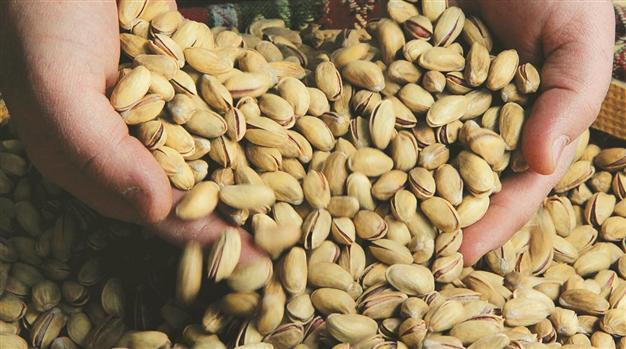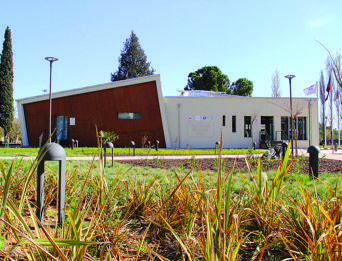Pistachio shells to heat eco-city in Gaziantep
GAZİANTEP - Anadolu Agency

An experimental ecological house that saves and produced energy to minimize energy consumption has been built in southern Turkish province of Gaziantep. The city planned to built at the region will use the house as a model. AA Photo
Turkey has begun to tender building its first ecological city, where public buildings could be heated by burning pistachio shells – the abundant local product in the southern province of Gaziantep.
The ambitious project will be founded within five years in a 3,200-hectare area between Gaziantep and Kilis on Turkey’s border with Syria.
French environmental engineering firm Burgeap discovered in December 2013 that Antep pistachio shells – with its 19.26 calorific value per kilo – are the most feasible local energy source in the province.
Burgeap now claims that this calorific value is considerable, and would be enough to provide heating and cooling for 55 hectares of public buildings.
A final report on the project’s viability is to be presented to the Gaziantep Metropolitan Municipality next month.
Turkey ranks third in the world for the production of Antep pistachios, which was named after the city it grows in the most, according to the U.N. Food and Agriculture Organization.
Speaking to Anadolu Agency, the energy manager of Gaziantep Metropolitan Municipality, Aysegul Tekerekoğlu, said the city would use a variety of energy-saving systems like green roofs, solar power, waste management and rainwater collection.
Tekerekoğlu said the local authorities will examine the French firms’ report before deciding whether to go ahead with the project, which would then be scheduled for completion within 12 months with a budget of 600,000 euros.
 Green technology producing a surplus of power
Green technology producing a surplus of powerGaziantep also hosts an experimental ecological house, which is pursuing a number of international awards.
Built in September 2013 the 320-meter property features thick walls with 40 centimeter, triple-glazed windows and a “green roof” – all designed to increase energy efficiency.
Pipes laid underground circulate fresh air in the house, helping to cool it in the summer and heat it in the winter by taking advantage of the earth’s temperature.
“The Earth’s temperature is three degrees cooler in the summer and warmer in the winter. But increasing or decreasing the temperature by one degree causes 7 percent of an energy waste, which means our house saves 21 percent of energy through using these air pipes,” Tekerekoğlu claimed.
The house also produces its own electricity through the photovoltaic panels placed in the yard, leading to a surplus production of power.
The house saves further energy by purifying gray water and collecting rainwater. The grey water purifying system sends the waste water to reservoirs, while rain water is collected and used to irrigate the yard.
Int’l competitionsThe ecologic house, with its integrated power generation, heating, cooling, airing and waste water management systems, provides a model for those who want to buy land and build the planned Ecologic City.
Right after it was built, it applied for recognition from Germany’s Passive House Institute, an independent research body that has played a crucial role in the development of houses with minimum carbon emissions and energy consumption.
The ecologic house also applied to the U.S. Green Building Council’s LEED Platinum certificate, which is the most widely recognized and used green building program across the globe.
Tekerekoğlu said the project was confident of expecting to receive both the LEED Platinum and German Passive House certification.
These projects are becoming increasingly important in Turkey because the country imports around 75 percent of its energy according to the 2012 data from the Turkish Statistical Institute (TÜİK).

 Green technology producing a surplus of power
Green technology producing a surplus of power